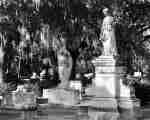 January 2022, singing with the professional Evensong choir at Epiphany Parish in Seattle. (Perhaps the best group I have ever worked with in a church setting.) I am on the right with the orange-ish mask.
January 2022, singing with the professional Evensong choir at Epiphany Parish in Seattle. (Perhaps the best group I have ever worked with in a church setting.) I am on the right with the orange-ish mask.
Reflections on personal concerns, and a wider view of our social predicament. (Ca. 1200 words, est. 4 min. read time)
The pandemic has been, well, stressful. Performing artists in all disciplines are gradually emerging from a period of unease, frustration, and disappointment. For singers especially, we needed first to understand–and then to accept–that SARS COV-2 was a respiratory virus transmitted through the air by aerosols. Among others, we can thank the National Association of Teachers of Singing for research that informed general guidelines for singers and singing teachers. It was this research that convinced me that public singing (indoors, at least) would need to be set aside, at least for a time. This began a hiatus that lasted more than a year and a half. (During this period, I worked on the Dog Days Poetry Gallery, which will be the topic of a future post.)
I regretfully gave up working with different two ensembles. It was not that these groups ceased to meet. Rather, it was that the groups’ leaders downplayed risks. It is difficult to say whether this was a misunderstanding of the situation, benign negligence, or sheer denial. Perhaps some combination of all of these was in play. And to be fair, continuing business as usual may not have been their call. In churches, music directors answer to Bishops, Rectors, and governing boards. Of course, deflection around risk happened across the economy. Though generalizations are slippery, the more invested an organization was in maintaining business “as usual,” the squishier it was in protecting worker safety. Moreover, guidance from municipal authorities was often confusing or contradictory. And certainly, there was a perfect storm of libertarian impulses and misinformation in the echo chambers of social media, podcasts, and talk radio. Living in “red” Georgia during 2020 and 2021, I experienced resistance and cognitive dissonance to masking, distancing, and vaccines in every public space I found myself in.
As the pandemic dragged on, some singers and ensembles pivoted into online spaces to continue producing work. I know a few of these folks, and I followed their endeavors with interest. View counters on YouTube and Vimeo pages certainly don’t tell the whole story. But the trade-offs between time invested and audience interest often seemed discouraging. For a few of these intrepid producers of digital content, paying viewers and listeners followed. For many others, they did not. Singers and players who depended on teaching income had some luck so long as they were able to equip themselves for teaching in online spaces. Others (including me) had neither the space nor the resources to do so. Many of us encountered the same economic disruptions of the pandemic that challenged restauranteurs, salons, or any other business directly serving customers at close quarters.
Some commentators are now proclaiming that the worst is over, even as Omicron infections are still cresting in many parts of the country. Many places in the USA are still resisting or dropping masking, to say nothing of continued resistance to vaccination. Only today, I received an email notice from a (former) director stating that planned choir services were canceled–too many members were out sick (presumably with Omicron). Currently, I am in Seattle, where compliance with public health guidelines is generally high. Yet the volunteer Cathedral choir is–again–on hiatus as members test positive.
Certainly, the continuation of the pandemic is in part a consequence of failed leadership and mistaken ideas about freedom. Both in the political sphere and many “essential” workplaces, expediency has often overruled prudence and safety. But politics and economics are not the only factors at work. We should not discount our natural, human impulses to steer a course back to some sort of “normal.” And sometimes, even our best intentions and practices don’t shield us from bad luck. Human beings who love to sing want to be together and make music. It is difficult to balance risk and reward not only in group singing, but in life.
As we move into 2022, many in-person singing ensembles are again meeting and presenting work. Though still a questionable call for some, most of us deriving part of our income from this work are back in the game. But enjoyment is elusive. For myself, I have internalized a sense of vigilance and unease that needs to be acknowledged and worked with as we all move forward. I find myself wondering about decisions around spacing, room ventilation, and the (understandable) tendency to drop social distancing if everyone is masked. And try singing for an hour while standing in front of an open window with a strong draft, wearing a cap and gloves, and a KN95. Perhaps we are channeling our ancestors who sang in winter in unheated churches!
On a practical level, many singers need to get back not only their mojo, but also their technical chops. Like any athlete who has been out of the game for a long period, gradual re-training on a sensible technical foundation is necessary. As we rehabilitate our vocal techniques, we are also working with the constraints of masking–and those constraints are not insignificant for breathing, resonance, and a sense of ease. They are, however, required if we are to balance risk and reward. And with masking, ensemble directors are needing to sharpen their ears even more, as the visual cues they seek from the faces of singers and players are absent with masking.
In my own practice, I did not fully understand what needed attention until I was back to singing in rehearsals and services. Though I didn’t necessarily embarrass myself, it certainly was not my “A” game. My voice teacher brain can guide me through this rehabilitation process, but it may be a while before high-level singing feels free and easy.
I started the pandemic with training in contact tracing, and have continued to serve as a volunteer on a community committee looking at data around Covid safety. Mask efficacy, airflow studies, cases numbers, and trends all occupy a lot of real estate in my brain. As the Omicron variant subsides, we will find ourselves in an endemic scenario, rather than a pandemic. However, the probability of future variants down the road is high. Those of us who weathered the storm may be breathing a sigh of relief, but heavy rains will continue.
By the time Omicron is behind us, and assuming another variant does not extend the game of virus whack a mole, the USA will have lost upwards of a million or more people to Covid. Many more lives will continue to collide with challenges in the aftermath. This has been a wrenching, generational calamity that has exposed both our weaknesses and our resilience. In the big picture, Americans and other Western countries have been fortunate to have access to medical care, vaccines, and the Web for remote work and distance learning. But we should forget that these affordances are lacking for many in other countries. That so many Americans would forego vaccines and simple masking, even as people fell ill and died in the thousands and then hundreds of thousands, remains baffling and points to disturbing truths about our society and culture. Textbooks and case studies in psychology, sociology, and public health will be grappling with this disconnect for years to come.
In the realm of the professional performing arts, perhaps we have learned to be more empathetic and forgiving to ourselves and of our colleagues. The professional musician game is familiar, and high standards are (usually) the norm. But those standards can at times be needlessly stringent and unforgiving. If we are now able to sing or play music together, perhaps we can do so with gratitude and hearts that have grown.








 Let’s start with Qigong, the older of the two practices. T
Let’s start with Qigong, the older of the two practices. T














 The new film version of “West Side Story” is a masterpiece, albeit with occasional plot jumps and tonal inconsistencies. But every musical has those. The 1957 original’s creative team was Arthur Laurents (book and screenplay), Stephen Sondheim (lyrics), Leonard Bernstein (music), and Jerome Robbins (choreography). Often, “West Side Story” is simply presented as a re-telling of Shakespeare’s “Romeo and Juliet” in contemporary terms. And the source material certainly shaped the story. But focusing solely on teenage desire and angst would be missing the point. There are deeper, fundamental questions that don’t lead to easy or comfortable answers. What does it mean to be an “American?” How does it feel to aspire to the “American Dream,” and how does it feel when it has passed you by?
The new film version of “West Side Story” is a masterpiece, albeit with occasional plot jumps and tonal inconsistencies. But every musical has those. The 1957 original’s creative team was Arthur Laurents (book and screenplay), Stephen Sondheim (lyrics), Leonard Bernstein (music), and Jerome Robbins (choreography). Often, “West Side Story” is simply presented as a re-telling of Shakespeare’s “Romeo and Juliet” in contemporary terms. And the source material certainly shaped the story. But focusing solely on teenage desire and angst would be missing the point. There are deeper, fundamental questions that don’t lead to easy or comfortable answers. What does it mean to be an “American?” How does it feel to aspire to the “American Dream,” and how does it feel when it has passed you by?


 years on, Leonard Bernstein’s music remains fresh and captivating, focusing the aspirations, joys, frustrations, and sorrows of the characters like a laser beam. Steven Spielberg (now 76) could have stopped making movies years ago. That he chose this work as his career capstone(?) demonstrates that big-budget musicals on screen are not only still possible, but necessary. With a Rotten Tomatoes critics score of 92 and an audience score of 94 (!), one can only look to Covid reluctance and yet another Spiderman franchise installment as contributing factors to the lagging box office of “West Side Story.” And with this film, we bid farewell to Stephen Sondheim, the last of the original’s creative team, who passed just as the movie was entering theaters. This only adds to the poignancy and timeliness of this reimagined and refreshed American classic.
years on, Leonard Bernstein’s music remains fresh and captivating, focusing the aspirations, joys, frustrations, and sorrows of the characters like a laser beam. Steven Spielberg (now 76) could have stopped making movies years ago. That he chose this work as his career capstone(?) demonstrates that big-budget musicals on screen are not only still possible, but necessary. With a Rotten Tomatoes critics score of 92 and an audience score of 94 (!), one can only look to Covid reluctance and yet another Spiderman franchise installment as contributing factors to the lagging box office of “West Side Story.” And with this film, we bid farewell to Stephen Sondheim, the last of the original’s creative team, who passed just as the movie was entering theaters. This only adds to the poignancy and timeliness of this reimagined and refreshed American classic.


